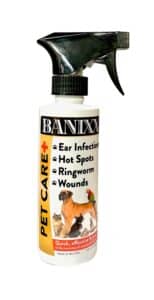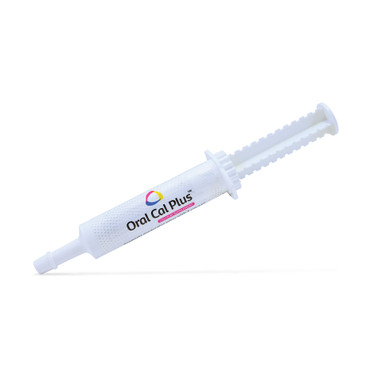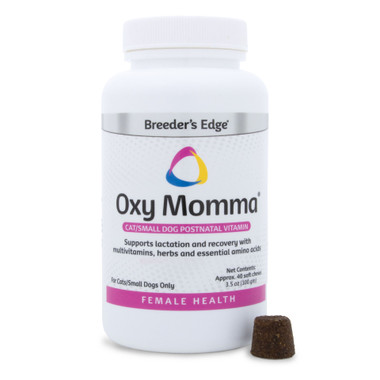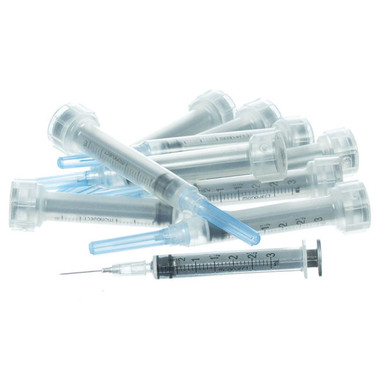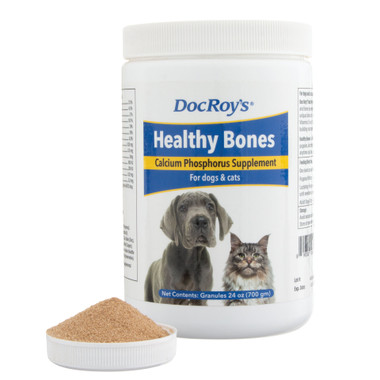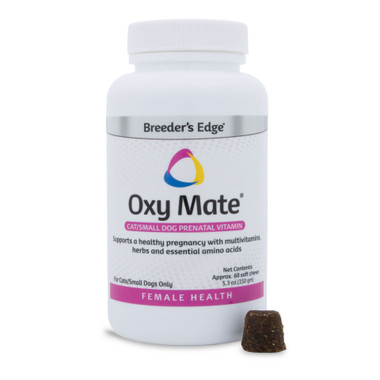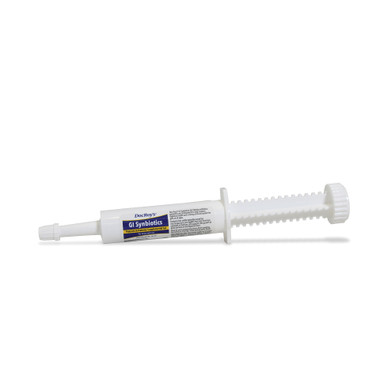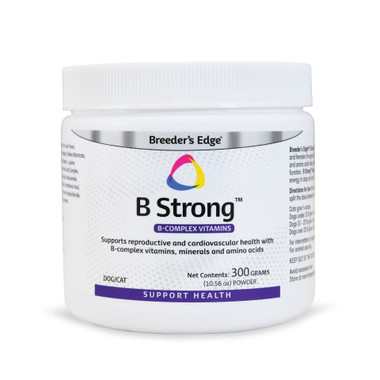Everything You Need to Know About Giardia in Dogs
Estimated 0 min read
Giardia in dogs might sound like a complex topic, but understanding it can significantly impact your furry friend’s life.
This often-misunderstood condition affects countless canines each year, yet many pet owners are unaware of it.
Let’s unpack the essentials of giardiasis and ensure you have the knowledge to keep your pup happy and healthy!
Key Takeaways about Giardia in Dogs
- Giardiasis in dogs is caused by the giardia parasite, leading to symptoms like diarrhea and weight loss
- Transmission occurs through ingestion of contaminated water, soil, or feces
- Effective management includes antiparasitic medications, environmental cleaning, and hygiene practices to prevent reinfection
What is Giardia?
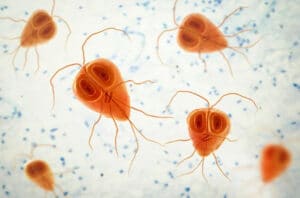
Protozoa Giardia
Giardia, a unicellular protozoan parasite, poses significant health risks to dogs, leading to giardiasis, a condition characterized by gastrointestinal disturbances.
Giardiasis is not merely a gastrointestinal condition but a complex interaction between the parasite and the host’s immune response. Giardia in the intestines can lead to malabsorption, where the damaged intestinal lining fails to absorb nutrients and water efficiently. This results in foul-smelling, watery diarrhea, and in severe cases, weight loss and dehydration.
The life cycle of Giardia encompasses two distinct forms: the trophozoites and the cysts. The trophozoites represent the active, feeding stage within the host’s intestines, where they attach to the intestinal wall. Through a process of encystation, trophozoites transform into cysts, a resilient form shed in the feces. This facilitates the parasite’s transmission and environmental persistence, posing a continuous risk of infection.
This protozoan’s ability to exist in two forms complicates its eradication from the host and environment, emphasizing the need for comprehensive treatment approaches, including pharmacological intervention and environmental management.
Symptoms of Giardia in Dogs

One common symptom of giardia in dogs is diarrhea
Unfortunately, the symptoms of giardiasis in dogs is remarkably variable. A significant proportion of infected canines may carry the parasite without displaying overt symptoms, acting as asymptomatic reservoirs for the spread of infection. Conversely, giardiasis can manifest with severe symptoms, leading to profound dehydration and weight loss.
The most common symptom of giardia in dogs is diarrhea that is acute, sudden in onset, and vary in severity. The stools are often soft, watery, and may contain mucus, indicative of intestinal irritation. Infected dogs frequently produce stools with a foul odor, a result of the malabsorption and digestive disturbances caused by the parasite. While less common, vomiting can occur in some cases.
The variability and potential severity of giardiasis symptoms underscore the importance of vigilance among pet owners and prompt veterinary consultation. Early detection and treatment are crucial for mitigating the immediate and long-term impacts of Giardia infection in dogs, ensuring the well-being of these valued companions.
Causes of Giardia in Dogs
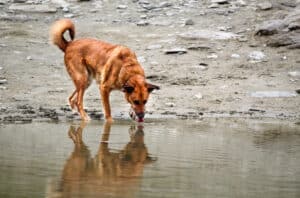
Contaminated water is a common cause
Giardia infiltrates canine populations through several well-defined pathways.
The primary route of Giardia infection is through oral intake of contaminated water, soil, food, or feces. The protective shells of Giardia cysts thrive in moist environments, making them a pervasive threat in various settings. When dogs consume or come into contact with these contaminated materials, they ingest the cysts. This then progresses to the trophozoite stage within the intestines, leading to infection.
Giardia cysts exhibit remarkable resilience outside the host body, capable of surviving for prolonged periods in water and damp environments. This facilitates the widespread distribution of giardia, as cysts can infect new hosts long after being excreted. Their immediate infectious capability upon ingestion underscores the rapid spread of giardia within canine communities.
Unfortunately, several factors elevate the risk of giardia infection among dogs. Puppies and younger dogs, with their still-developing immune systems, are particularly susceptible. Similarly, dogs with compromised immunity face a heightened risk of infection.
Dogs in densely populated settings are at increased risk due to the higher likelihood of encountering contaminated feces or surfaces. Dogs that drink from stagnant water or who eat soil or feces are at higher risk as well.
The transmission dynamics of giardia necessitate a proactive approach to prevention, emphasizing the importance of environmental management and behavioral modifications to mitigate the risk of infection.
Diagnosing Giardia in Dogs

Your dog’s stool needs to be analyzed
When it comes to diagnosing giardia in dogs, a comprehensive and meticulous approach is paramount.
The first step to diagnose giardia in dogs begins with the analysis of stool samples. Given the intermittent shedding nature of giardia cysts, this method may require multiple samples collected over several days. This process aims to identify the presence of giardia trophozoites or cysts, which are indicative of an active infection.
However, to overcome the limitations of direct examination, your vet may turn to more sophisticated diagnostic methods.
One of the tests they may go for is an Enzyme-linked Immunosorbent Assay (ELISA). This test is designed to detect giardia-specific antigens in the stool. Its high sensitivity makes it a valuable tool for identifying giardia infections, even when microscopic examination fails.
Similarly, your veterinary may opt to conduct an Immunofluorescent Assay (IFA). IFA offers a high degree of specificity by utilizing fluorescent antibodies that bind to giardia antigens. This method allows for the direct visualization of the parasites under a specialized microscope, providing clear evidence of infection.
Your veterinarian will also likely opt to test your dog’s Polymerase Chain Reaction (PCR). By amplifying the DNA of giardia organisms present in stool samples, PCR offers unparalleled accuracy. This method not only confirms the presence of giardia but can also help differentiate between various strains of the parasite.
The interpretation of diagnostic results requires a nuanced understanding of giardia’s lifecycle and its clinical implications. A positive test indicates an active infection, necessitating a tailored treatment plan. However, the presence of giardia does not always correlate with clinical symptoms. As such, the decision to treat is informed by a comprehensive evaluation of the dog’s overall health, symptomatology, and potential for zoonotic transmission.
Treating Giardia in Dogs

Your dog with need an antiparasitic medications
The cornerstone of giardiasis treatment involves the administration of specific antiparasitic medications. Fenbendazole is a broad-spectrum benzimidazole anthelmintic effective against giardia by disrupting its cellular division. The recommended duration of treatment is three to five days.
Metronidazole, an antibiotic with antiprotozoal activity, targets anaerobic bacteria and protozoa, including giardia. It is particularly useful for its additional anti-inflammatory properties in the gut. In certain cases, a combination therapy using both fenbendazole and metronidazole may be indicated to enhance treatment efficacy.
Optimizing the dog’s overall health during treatment is vital. This includes ensuring adequate hydration and providing a balanced, easily digestible diet. In some instances, probiotics may be recommended to help restore intestinal flora balance.
It’s essential to closely monitor the dog’s response to treatment, with adjustments made as necessary based on clinical progress and any side effects. The potential for resistance or partial treatment response necessitates a flexible approach. In complex cases, vets may recommend incorporating alternative or additional antiparasitics, such as albendazole or nitazoxanide.
Critical to the success of any treatment regime is the rigorous decontamination of the dog’s environment.
Owners must regularly clean and disinfect their dogs’ living spaces and objects the dog frequently contacts. But don’t just use any household cleaner use products that are specifically effective against giardia cysts. Similarly, owners should bathe the dog at the end of the treatment to eliminate any cysts from the fur. Owners must also take care to ensure all fecal matter is promptly and safely disposed of to reduce environmental contamination.
Post-treatment, implementing preventative strategies is key to avoiding recurrence. This includes maintaining good hygiene practices, preventing access to contaminated water sources, and regular fecal screenings. For households with multiple pets, treating all animals simultaneously may be advised to prevent cross-infection.
Understanding the Zoonotic Risks of Giardia

Your dog could transmit Giardia to you
Giardia can be transmitted from animals to humans. This crossover potential, although relatively low, exists particularly in environments where close contact between dogs and their owners occurs.
Humans can contract giardiasis by accidentally ingesting giardia cysts, a risk that is heightened in households with infected dogs. The transmission can occur through direct contact with contaminated fecal matter, surfaces, or water sources. It’s important to note, however, that the type of Giardia that typically infects humans is different from the one commonly found in dogs. This means that while zoonotic transmission is possible, it is not the primary route of giardiasis infection in humans.
In light of this, preventive measures are paramount. These include washing hands thoroughly after handling dogs or cleaning up feces and ensuring dogs can’t drink contaminated water. Regular veterinary checks and prompt treatment of infected animals can also significantly reduce the risk of zoonotic transmission. Environmental disinfection plays a crucial role in preventing the spread of giardia cysts, thereby protecting both canine and human health.
By fostering an environment of awareness and proactive prevention, we can safeguard the health of both our canine companions and their human families.
Understanding giardia in dogs is just the beginning of ensuring your dog’s well-being. At Banixx, we’re committed to helping you keep your pet healthy and happy.
Banixx for Dog Lovers
Visit us again for more straightforward, expert advice on caring for your furry friend. At Banixx, our commitment extends beyond today’s insights. We invite you to stay tuned to Banixxblogfor the latest in canine care. Here, we blend scientific knowledge with a deep love for dogs, ensuring your pet enjoys a vibrant, joyful life. If you are interested in how to maintain yourdog’s nails/claws, or handle anear infection, we cover that. Or are you interested in more quirky items ? such ashow long can a dog go without peeing, orWhy does my dog drink from a toilet? Yes, delve into those areas for you too!
Sources
https://vet.osu.edu/sites/vet.osu.edu/files/documents/preventive-medicine/Canine%20Giardiasis%20%28Giardia%29%20Fact%20Sheet-20191104_0.pdf
https://www.petmd.com/dog/conditions/infectious-parasitic/c_multi_giardiasis
https://vcahospitals.com/know-your-pet/giardia-in-dogs
https://www.vet.cornell.edu/departments-centers-and-institutes/riney-canine-health-center/health-info/giardia-infection-treatment-and-prevention



